The Sky's the Limit: 15 Key Milestones in Aviation History
Aviation pioneers
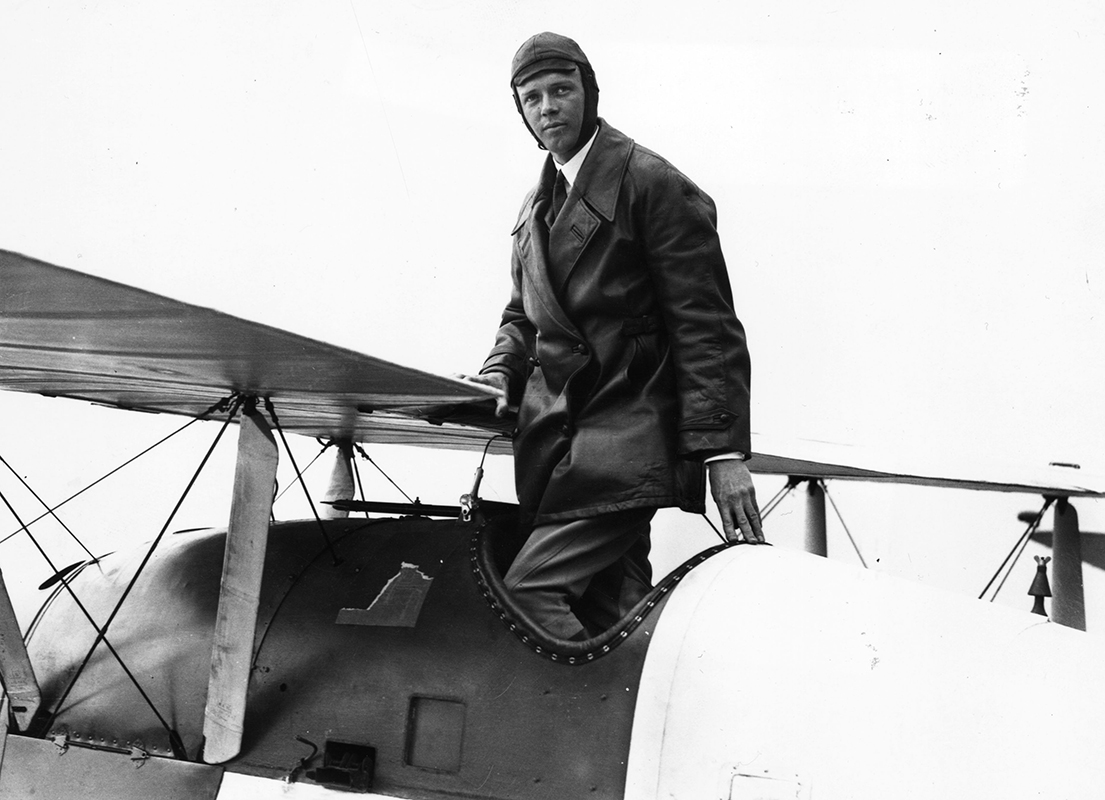
On May 21, 1927, Charles Lindbergh claimed his spot in aviation history when he landed in Paris, France, after a 33.5-hour flight from New York, becoming the first person in the world to complete a solo and nonstop transatlantic flight.
At 10:24 p.m. local time, Lindbergh guided his plane, the Spirit of St. Louis, to the landing strip on the Le Bourget airfield, before an eager crowd of approximately 100,000 people, the New York Times reported on May 22 of that year. Airfield workers, the first to reach the plane, exclaimed, "Cette fois, ca va!" ("This time it's done!") and Lindbergh somewhat understatedly replied, "Well, I made it," according to the Times.
Both before and after Lindbergh's record-breaking achievement, numerous milestones marked humanity's progress as we took to the skies, with men and women putting their lives on the line to test the boundaries of how far and how fast people could fly.
Here are just a few of many historic "firsts" in aviation.
1783: First balloon flight
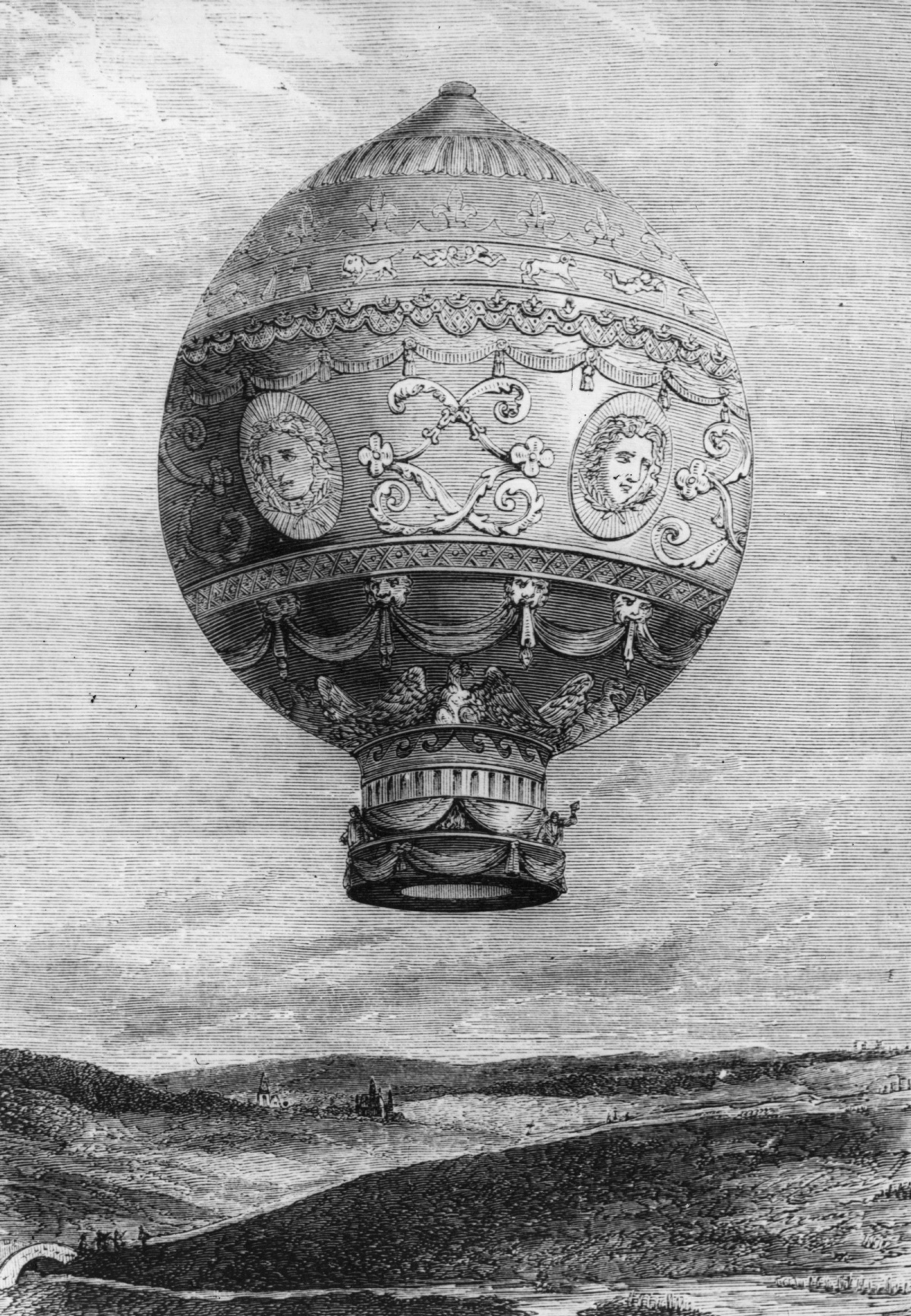
On Sept. 19, 1783, paper manufacturers Joseph-Michael and Jacques-Ètienne Montgolfier demonstrated the flight of their hot-air balloon in front of an audience that included King Louis XVI, Queen Marie Antoinette, and 130,000 onlookers. The balloon, a paper-lined silk bag, measured about 30 feet (9 meters) in diameter, and was decorated lavishly with images of suns, symbols representing the zodiac, and decorative flourishes. It flew for a distance of about 2 miles (3.2 kilometers) carrying a basket that held a sheep, a duck, and a rooster.
1852: First dirigible
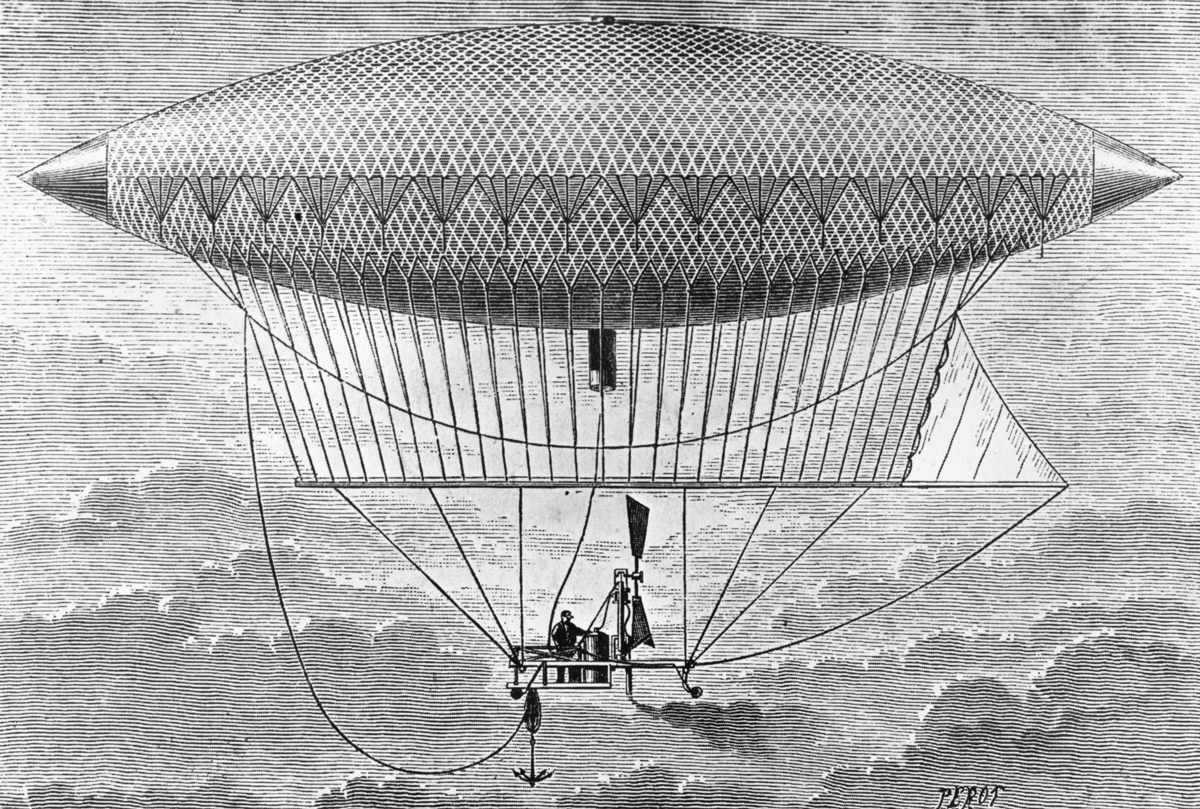
French engineer Jules Henri Giffard designed and flew the first steam-powered airship, a cigar-shaped lightweight bag measuring 143 feet (44 meters), attached to a steam engine powering a propeller. Giffard and his airship took flight from a racetrack in Paris on Sept. 24, 1852, and traveled nearly 17 miles (27 kilometers).
1903: First airplane flight
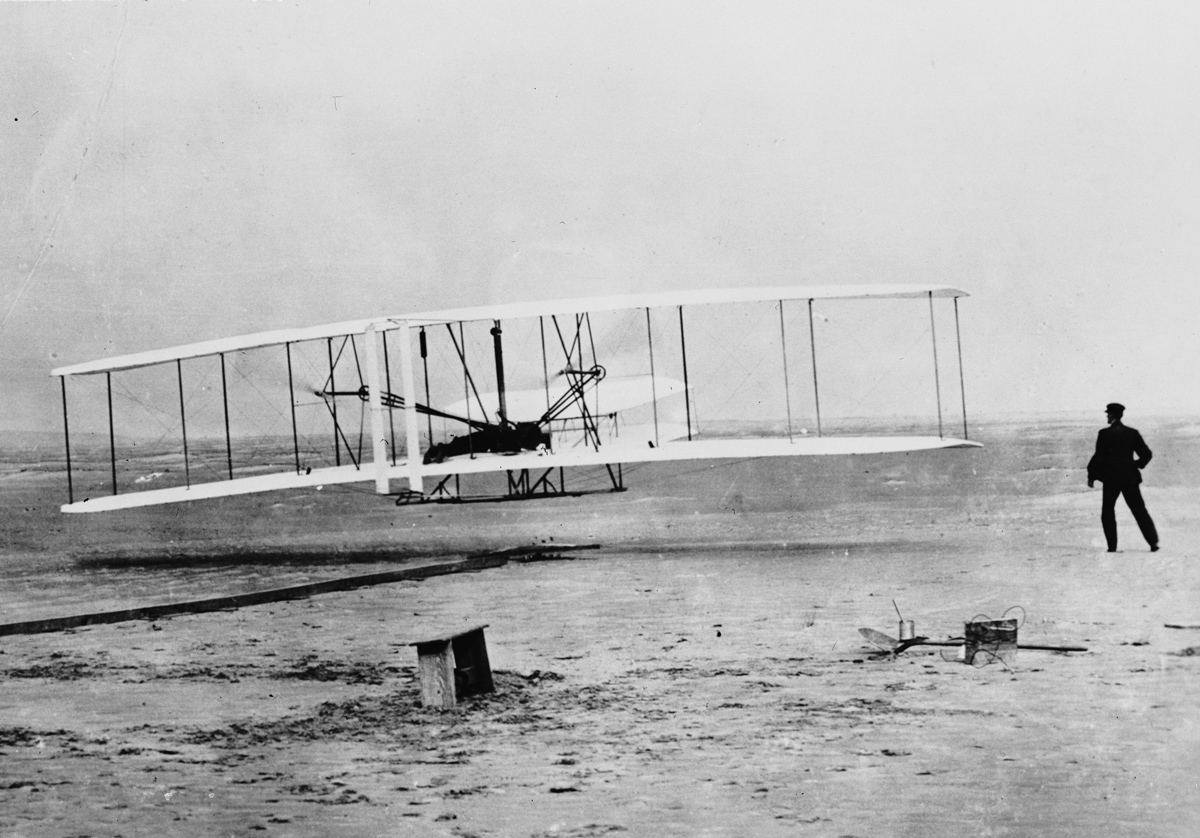
Orville Wright performed his first flight near Kill Devil Hills, south of Kitty Hawk, North Carolina, on Dec. 17, 1903, while lying on his stomach on the lower wing of a biplane he had designed with his brother Wilbur, according to a description by the National Park Service. As the winner of a coin toss with Wilbur, he was the first of the brothers to test their flying machine, which was powered by a 12-horsepower engine. The flight's airspeed was 34 miles per hour (55 km/h), and the plane covered a distance of about 120 feet (37 meters) in 12 seconds, before returning to the ground.
1908: First airplane fatality
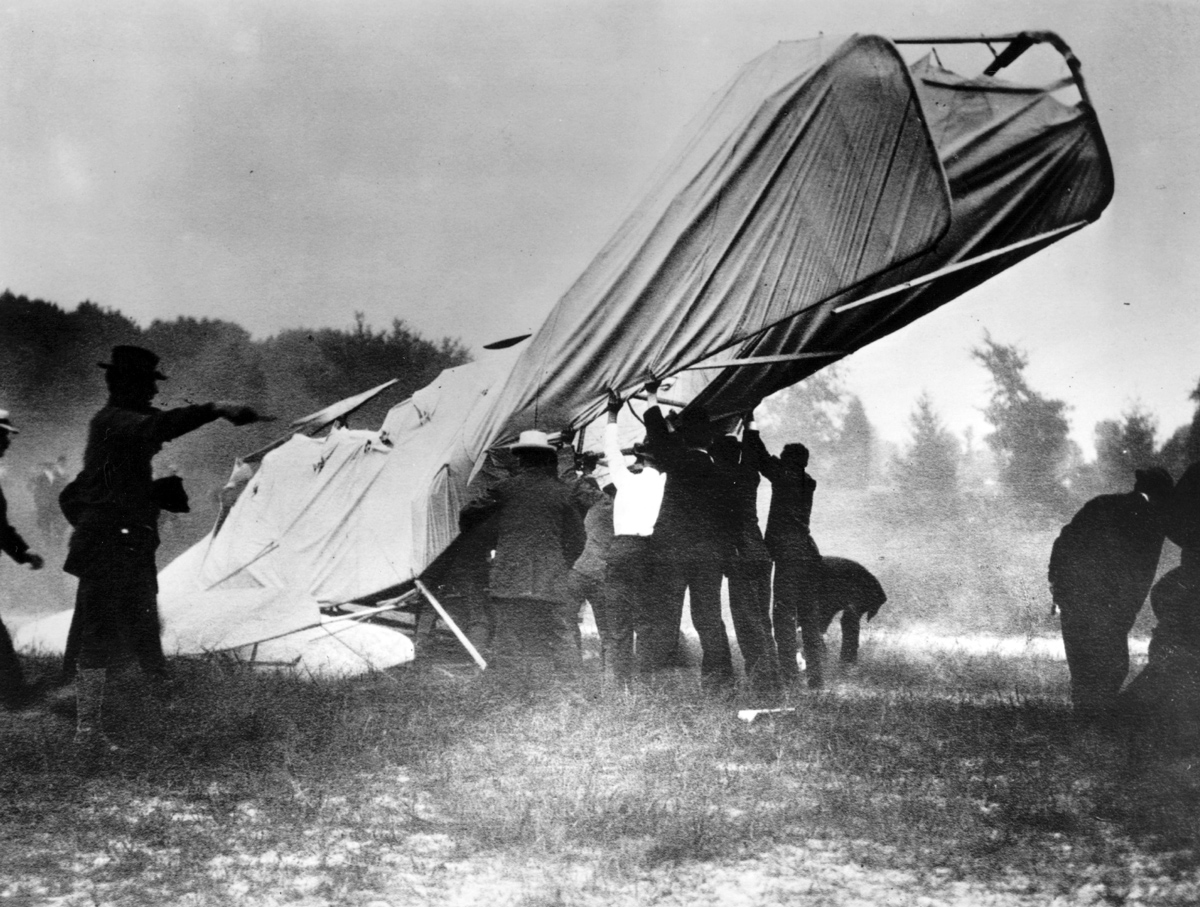
The first person to die in a plane crash was Thomas Etholen Selfridge (1882–1908), a lieutenant in the U.S. Army. Selfridge volunteered to be a passenger during a flight demonstration of the Wright Flyer at Fort Myer, a previous name for a U.S. Army post in Arlington County, Virginia. Everything went smoothly when the plane took off on Sept. 17, 1908, but a propeller failed during its fifth circuit and the craft plummeted nose-first into the ground. Selfridge suffered a fractured skull, and died of his injuries three hours after the crash, according to the Arlington National Cemetery website.
1910: First licensed woman pilot
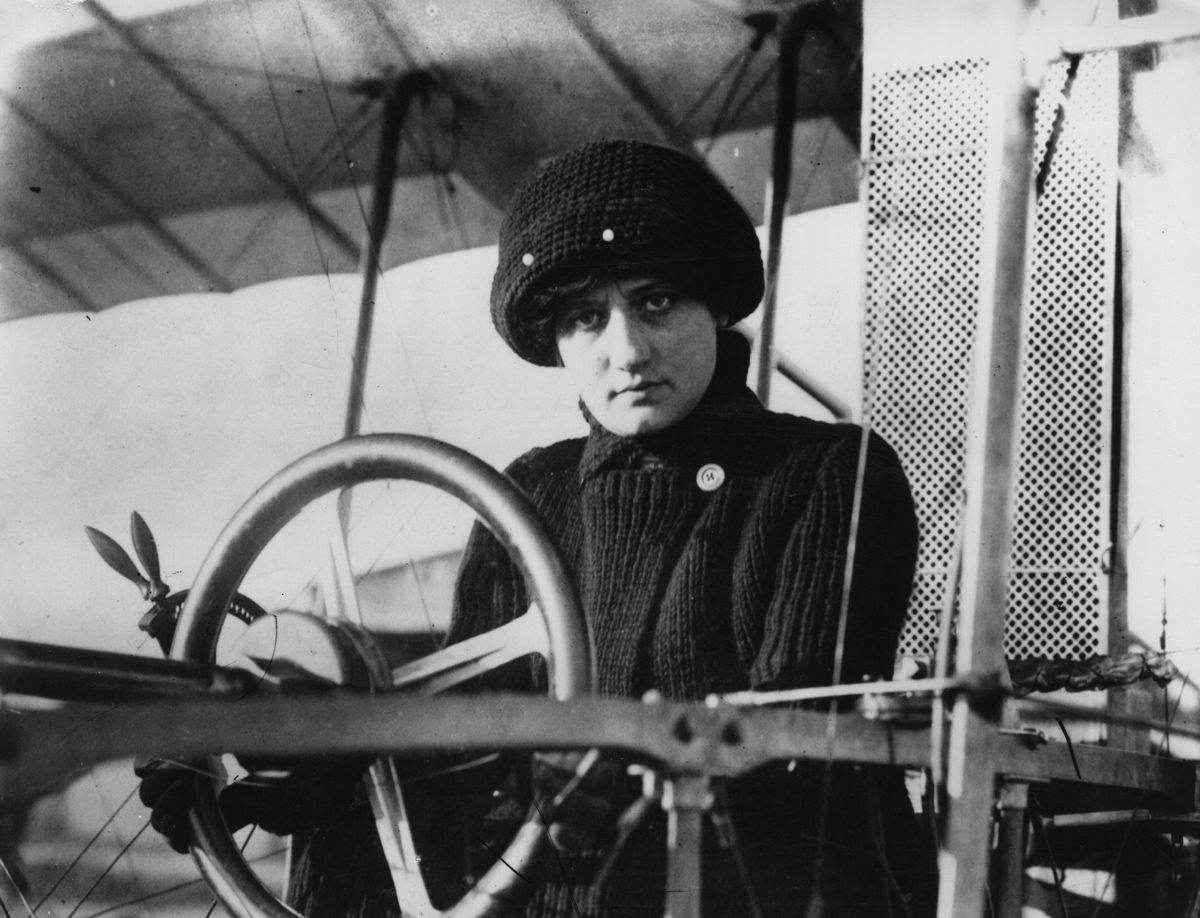
Baroness Raymonde de la Roche was taught to fly by the French aviation pioneer Charles Voisin, and she became the first woman to receive a pilot's license on March 8, 1910. De la Roche went on to win the Femina Cup — an aviation award for women that was established in 1910 — for completing a four-hour nonstop flight, and she set a women's altitude record in 1919, reaching a height of 15,700 feet (4,785 meters), the National Air and Space Museum reported.
1917: First African American combat pilot
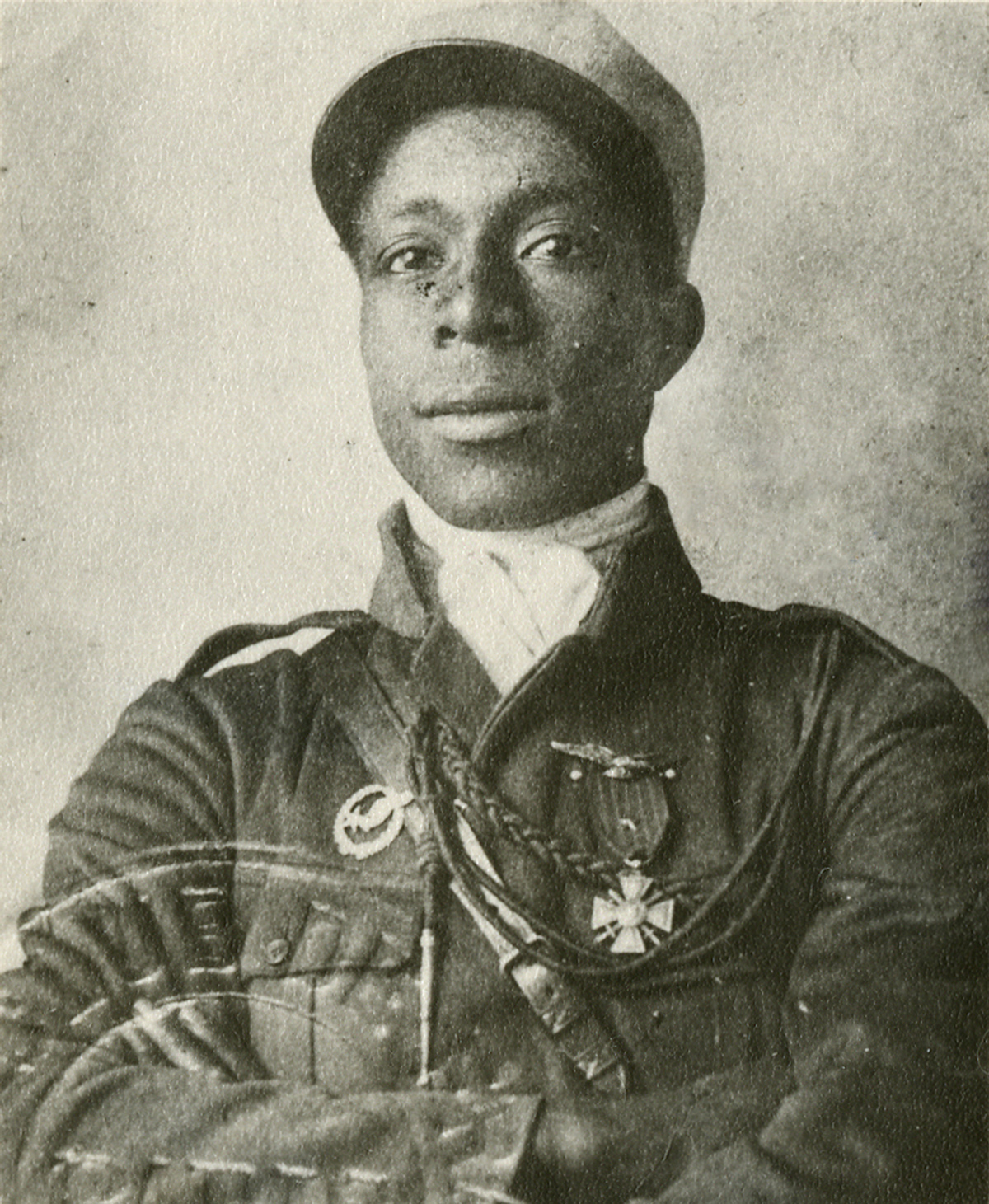
Eugene Jacques Bullard was born in Georgia in 1895, emigrating to Europe when he was 17 years old by stowing away on a German freighter. He later settled in Paris, joining the French flying service Aéronautique Militaire in 1916 and becoming a pilot in 1917. When the United States entered World War I, Bullard applied to join the U.S. Air Force but was rejected because of his race, according to a biography published online by the National Air and Space Museum.
1919: First nonstop transatlantic flight

Before Charles Lindbergh crossed the Atlantic solo, two men made history with a nonstop transatlantic flight that landed in Clifden, Ireland, on June 15, 1919. John Alcock and Arthur Whitten-Brown flew a modified Vickers Vimy, a long-range bomber produced in the United Kingdom, taking off from Newfoundland in Canada on June 14, 1919, and finishing the crossing after 16 hours and 27 minutes, according to the Aviation History Online Museum.
1924: First round-the-world flight

Circumnavigating the globe by air for the first time took 175 days, and was completed on September 28, 1924, by eight U.S. Army Air Service pilots and mechanics, flying four airplanes named after American cities: "Seattle", "Chicago", "Boston" and "New Orleans," the Smithsonian National Air and Space Museum reported. The team flew west from Seattle, Washington, on April 6, 1924, covering 27,550 miles (44,337 kilometers) and stopping 74 times along the way. Only two planes completed the journey: "Chicago," piloted by Lowell Smith and Leslie Arnold, and "New Orleans," helmed by Erik Nelson and John Harding Jr.
1931: First flight into the stratosphere
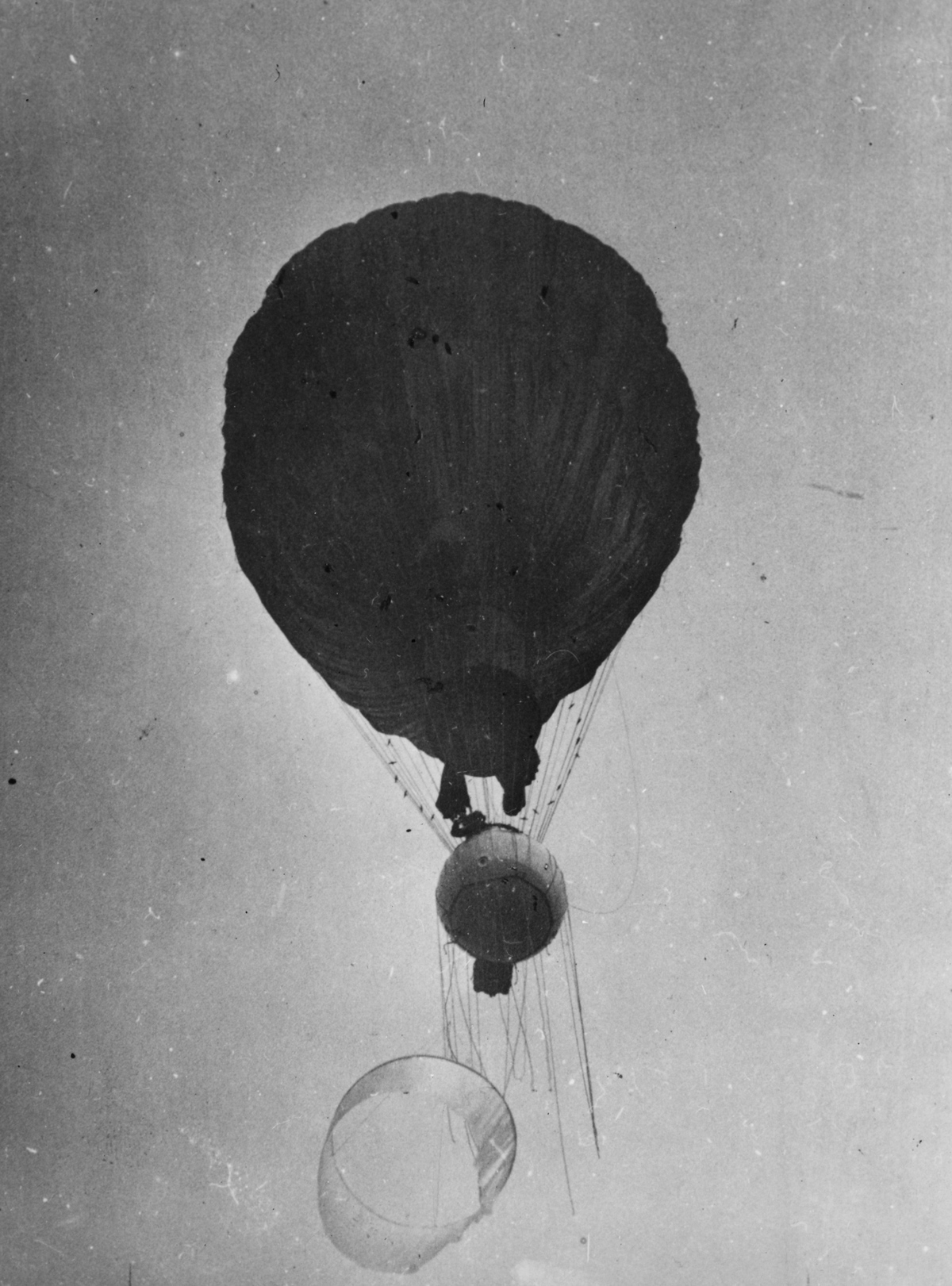
Swiss physicist Auguste Piccard and his assistant Charles Kipfer were the first to ride a balloon into the stratosphere (and into the history books). In a 17-hour flight on May 27, 1931, their balloon ascended to an astounding altitude of 51,775 feet (15,781 meters) as they traveled from Augsburg, Germany, to the Gurgl glacier in Tyrol, Austria, the magazine Air and Space reported.
1936: First helicopter flight
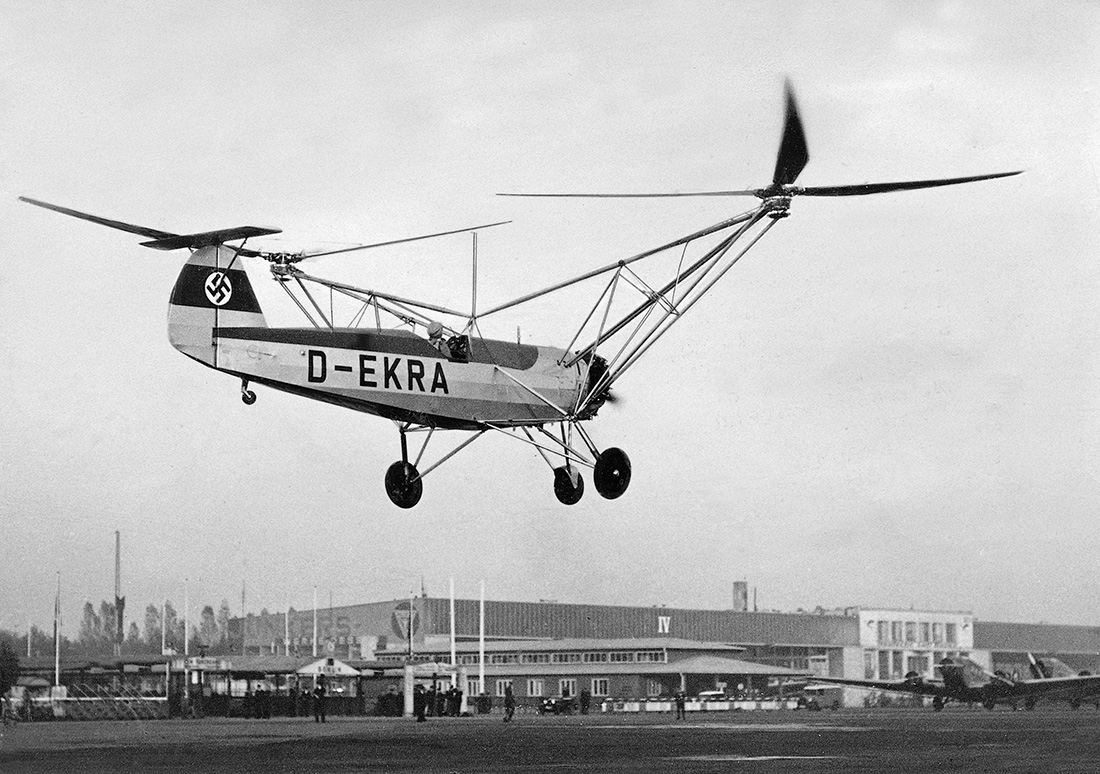
So-called "true" helicopters — aircraft topped with horizontally revolving rotors to provide propulsion and lift — made their first appearance in the 1930s, historian Spencer C. Tucker wrote in the book "Instruments of War: Weapons and Technologies that Have Changed History" (ABC-CLIO, 2015). A prototype designed by German engineer Heinrich Focke first took flight on June 26, 1936.
Sign up for the Live Science daily newsletter now
Get the world’s most fascinating discoveries delivered straight to your inbox.

Mindy Weisberger is an editor at Scholastic and a former Live Science channel editor and senior writer. She has reported on general science, covering climate change, paleontology, biology and space. Mindy studied film at Columbia University; prior to Live Science she produced, wrote and directed media for the American Museum of Natural History in New York City. Her videos about dinosaurs, astrophysics, biodiversity and evolution appear in museums and science centers worldwide, earning awards such as the CINE Golden Eagle and the Communicator Award of Excellence. Her writing has also appeared in Scientific American, The Washington Post and How It Works Magazine. Her book "Rise of the Zombie Bugs: The Surprising Science of Parasitic Mind Control" will be published in spring 2025 by Johns Hopkins University Press.










